|
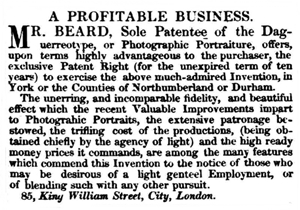
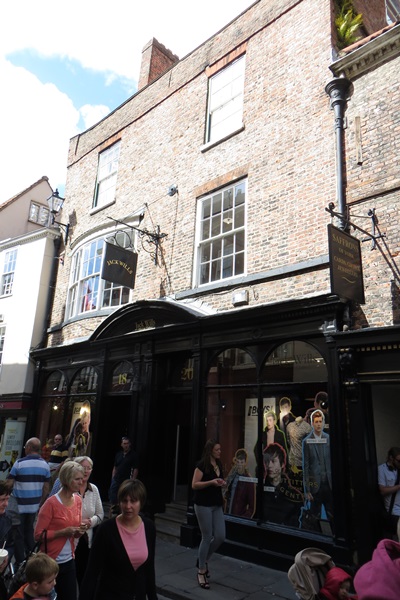 Samuel Walker was a painter, decorator and plumber but he was also
a talented portrait painter. From about 1844 he lived at no.50 (now 18-20)
Stonegate, York. Samuel Walker was a painter, decorator and plumber but he was also
a talented portrait painter. From about 1844 he lived at no.50 (now 18-20)
Stonegate, York.
No.50 Stonegate was built originally c1720 for Theophilus Garencieres,
apothecary(son of a then very famous French apothecary, Theophilus de Garencières). In the late 1830s &
early 1840s it was occupied by Thomas Cooke, again very well-known in his day, but as an optical
instrument maker.
Daguerreotype photography was the birth of photography as we now know
it and arrived in England in 1841. Unfortunately, Richard Beard bought the patent rights
for the whole of England & Wales. To open a daguerreotype studio a license had to be
purchased from Beard. The license for York gave the photographer exclusive rights to take
photographs in the City of York and 20 miles around. If you used daguerreotype camera without
a license then Beard could prosecute.
An advert (above) appeared in local newspapers in April 1844 and Samuel Walker
travelled to London to learn daguerreotype photography, probably at Beard's studio, and purchased
the license for York. His studio was up and running by mid-September 1844.
|
|
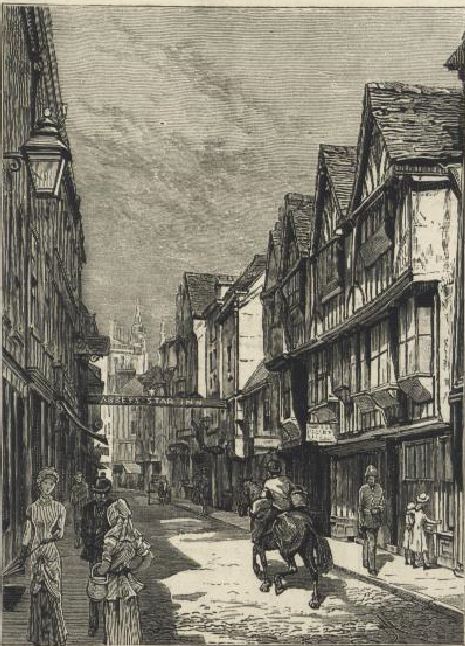
Walker had been a portrait painter beforehand so his shop probably
displayed paintings alongside daguerreotypes. He was in competition with other portrait
painters in Stonegate and nearby streets.
The cost of a daguerreotype, at one guinea, would be about the same as having a
small likeness taken by a portrait painter. The difference was that the daguerreotype really was a
true likeness.
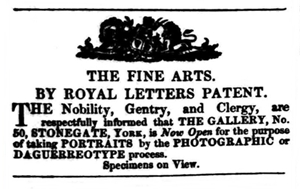
In April 1846 the York Institute of Popular Science & Literature held a
bazaar in their newly-built lecture rooms. There was an exhibition which included many artworks and
included some of Walker's daguerreotypes of "some of the principal inhabitants of
York."
Walker's decorating business continued to run alongside and between May and July
1846 he (or his employees) were redecorating Salem Chapel in St.Saviour's Place.

The photographic side of the businesses probably suffered after the railway
bubble burst, impoverishing previously wealthy clients. In 1849 Walker sold his daguerreotype
license to William Pumphrey who opened a daguerreotype gallery in Coney Street in July, 1849. The
advert above is from this date and Pumphrey has halved the cost of a daguerreotype portrait.
|
|
The York Herald, 16 March 1850
We yesterday had the pleasure of inspecting a full length portrait of Lieutenant
Ainslie, of the 1st Royal Dragoon Guards, whose regiment is now stationed in York. The Lieutenant
is represented in full dress costume and is standing in an easy and natural position, with his
helmet in his right hand, his left supporting his sword.
It is painted by our fellow citizen, Mr.Samuel Walker, of Stonegate, and is an
admirable production, both as regards the composition of the picture, the faithfulness of the
likeness, and the free and beautiful style of coloring, which speak much for the talent of the
artist. Our readers will observe, by advertisement, that it is exhibiting for a short period at Mr
Glaisby's Library, in Coney Street.
|
|
The York Herald, 8 June, 1861
SUCCESS OF A YORK ARTIST IN AMERICA.
Some few years ago, Mr.Samuel Walker, who resided in Stonegate, in the city of
York, retired from the business of ordinary painter and decorator, and turned his attention to a
higher class of art - in short he became an artist, and many even of his early productions excited
considerable interest. He soon after left York, and, we believe, studied for some time in London.
From that period to the present we have heard little of Mr Walker, except that he had found scope
for his genius in the New World.
A recent number of a newspaper published in New Orleans, however, proves that Mr
Walker is not only a resident in that city, but that he has already considerable fame as an artist.
As the particulars will doubtless be interesting to many of the friends of Mr Walker in this
country, we make the following extract.
"We are not those who are picture-mad, and can go into dangerous physical
demonstrations over the quiet coloring of Elliot, or the dazzling supernatural splendors and
terrific preternatural glooms that combine to make the insane skies, the gamboge suns, the blinding
sunsets, and the scorching noon of Turner's papers. We like to look at a painting that is true in
its representations, happy in its harmonies, pure in its tone, and correct in its drawing, making a
whole that is perfection. Hence we visited Mr Samuel Walker, no.175, Canal Street, and feasted our
eyes over some fine works of art emanating from his skilful pencil.
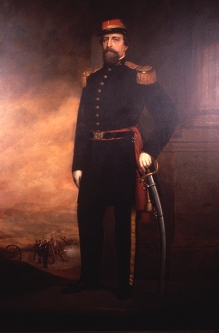 We found Mr Walker, as a painter no unworthy of his great master, the
celebrated William Etty. On the walls of Mr.Walker's studio there are many fine works of art,
but none deserving a notice more appropriate to this column than the painting of Major James
Burdge Walton, of this city - a painting ordered by the members of the battalion of Washington
Artillery, and by them presented to their worthy Major, as a slight token of their high
admiration of him as a gentleman, friend and soldier. We found Mr Walker, as a painter no unworthy of his great master, the
celebrated William Etty. On the walls of Mr.Walker's studio there are many fine works of art,
but none deserving a notice more appropriate to this column than the painting of Major James
Burdge Walton, of this city - a painting ordered by the members of the battalion of Washington
Artillery, and by them presented to their worthy Major, as a slight token of their high
admiration of him as a gentleman, friend and soldier.
This painting is a fine one. The figure is in a very spirited and easy position,
and yet strictly military and commanding. Mr Walker, the artist, has evidently accomplished what he
had aimed at, a military portrait of the Major, and those who have observed him at the head of his
battalion, will at once recognize that decision and determination of expression peculiar to the
Major when in the discharge of the duties of his command.
The figure is relieved by a massive column of granite, in which is seen the real
texture of the marble. The whole is relieved by a splendid, glowing sunset sky, and in the distant
landscape is seen a group of the Washington Artillery (all portraits of the Company)
firing a salute commemorative of the Declaration of the Independence of South Carolina, when Mr
Walker got the idea of the group. The painting is nine feet high and six feet wide; the whole is
painted in a bold artistic effect and yet every detail in the painting has the very texture of what
the artist had intended to represent.
Those who are acquainted with high art will at once pronounce it a production of
an educated artist, well acquainted with the rules of art. The painting will remain at Mr Walker's
studio for some weeks prior to its removal. The public are invited to call at Mr Walker's and
examine the painting, and where upwards of two hundred paintings, among which is the full life
sizes portrait of the late Duke of Wellington, and a large painting of the Earl of Stafford, with
his private secretary, the night previous to his execution. Of Mr Walker's studio we shall have
more to say anon."
|

